Blue Moon Community Garden

Blue Moon Community Garden.
photo: Gina Chorover
Blue Moon Community Garden is a jewel among gardens. It is an award-winning garden, is completely accessible to disabled gardeners, it boasts a water harvesting system, and it is located next to Tucson House, a high rise apartment building for low-income, handicapped, and elderly residents.
Situated at 1501 N. Oracle Rd., near the Oracle and Drachman intersection, Blue Moon exists in a “food desert,” miles from grocery stores. The garden can provide neighborhood gardeners with high quality fruits and vegetables that would otherwise be unavailable to them.
The garden is unique because it has cement block raised beds, “table” beds, and the traditional ground-level beds, according to Blue Moon coordinator Dorothy Weichbrod.
“The table beds are made for the wheel-chair bound. Beds are raised for varying degrees of disability,” she adds. “The beds have a special width that makes it possible to reach into the middle of the bed. The centers of the beds are deep where root plants can be grown, and around the border is for plants with shallower roots like lettuce.”
Everyone in the neighborhood is welcomed to have a plot at Blue Moon, but most of the plots are currently being used by residents of Tucson House. Water harvesting is one of the features at Blue Moon. There is a 15,000 gallon water cistern on site, from which the beds are irrigated.
Weichbrod says that the fee for a bed, including irrigation, is set according to income. Currently the fee schedule is $6, $12 or $18 each month. “The $6 and $12 plots are funded by scholarships raised by the Community Gardens of Tucson’s Board (of Directors).” CGT provides scholarships to low-income gardeners who apply for all of Tucson’s community gardens.
Blue Moon Community Garden developed as part of the City of Tucson’s Oracle Area Revitalization, according to Gina Chorover, a lead urban planner for the City and also chair of the Community Gardens of Tucson. The area was identified as a food desert, says Chorover, by the Drachman Institute at the University of Arizona.
At that time, “the nearest grocery store was several miles away and a large percentage of people in the area did not have access to a vehicle. Bus service also stopped early on weekdays, preventing people from easily getting to the grocery store.”
Project funding for the garden came from a grant, a University of Arizona Landscape Architecture studio class developed the concept, and Norris Design of Tucson designed the garden which opened in March 2012.
Chorover says the garden has won two awards already. “The first is from the Arizona Chapter of the American Society of Landscape Architects for the design, and a second award is from the State Housing office. And I just heard we have won a third award from another housing agency.” She adds, “The garden has been a wonderful success in terms of the participation by the Tucson House residents. We would like more participation from the surrounding neighborhood.”
The garden’s coordinator, Dorothy Weichbrod, also has a plot. “I’m in transition now. I have tomatoes, okra, basil, oregano, jalapeno, and eggplant. But I’m emptying the bed, and I’m planning to plant beets, onions, garlic, Swiss chard, spinach, and sweet potatoes. I’m producing food for my use and to share. My garden plot keeps me in organic food, and it brings my food bill down. I enjoy gardening.”
What does Blue Moon Community Garden need now? “Volunteers” is Weichbrod’s answer. “We just had a group of 16 engineering students from the University of Arizona, a group called Engineers without Borders, who weeded the garden. They worked hard!
“The difference between our garden and others is that we have landscaping and an orchard. The participants have limitations. We don’t have the manpower to take care of landscaping. We still need composting done.” Helping the disabled gardeners is always welcome at Blue Moon Community Garden.
“My main job as I see it,” Weichbrod adds, “is to build community with the people we have, to communicate with each other, to have a newsletter. We welcome everyone.”
To learn more about Tucson’s community gardens, visit CommunityGardensofTucson.org.

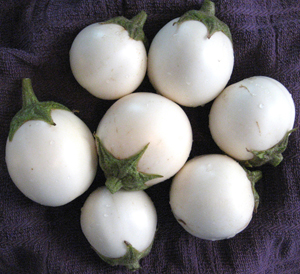
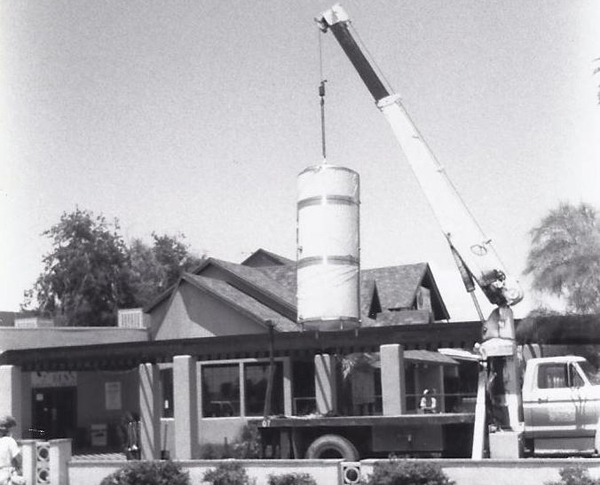
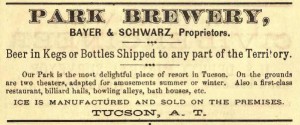
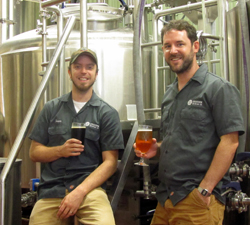
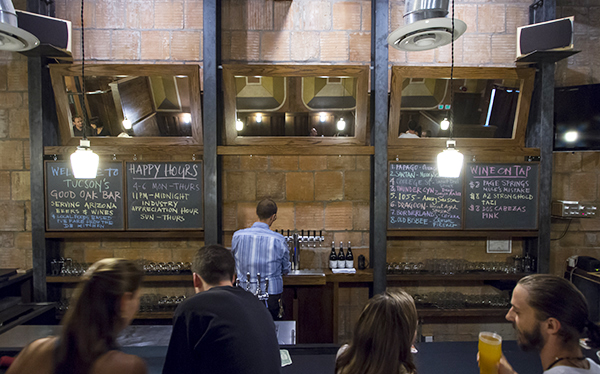
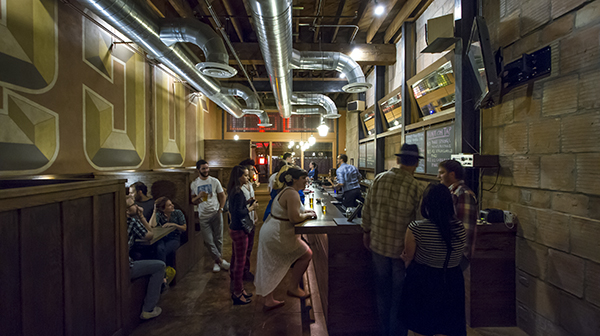
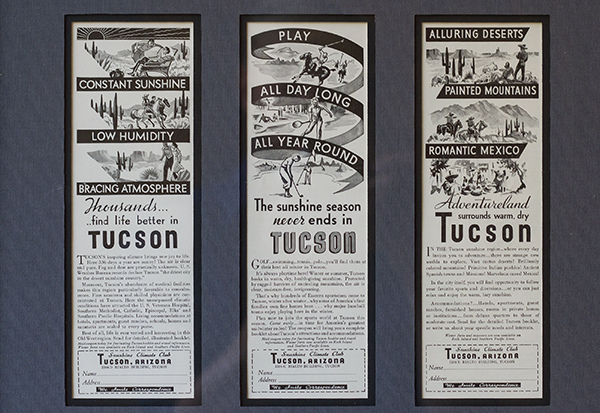
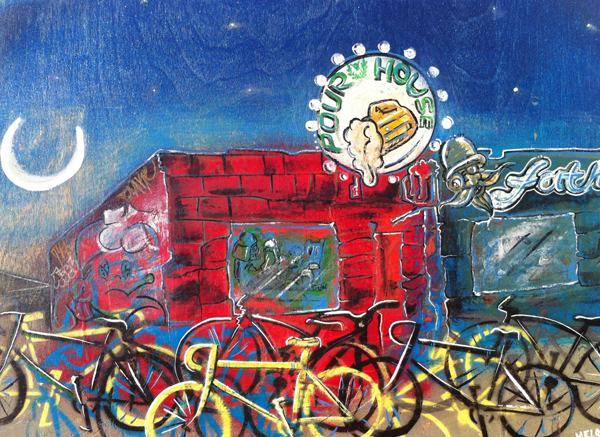

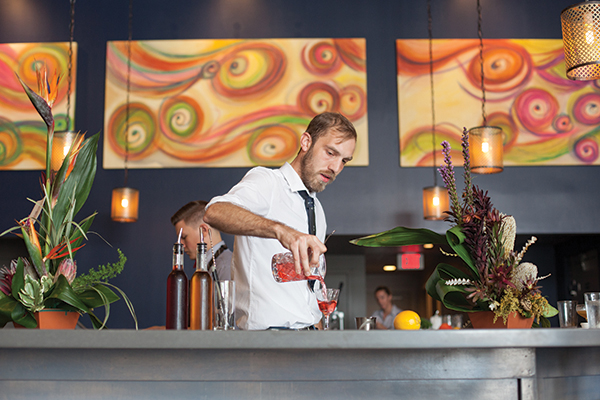
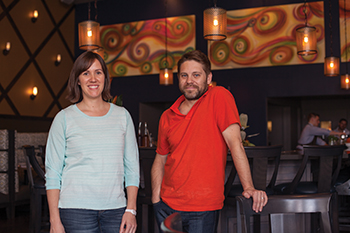 Against the dark walls of the rum house, Morales’ bright canvas colorfully pops in the light with yellow, magenta, green and purple hues. In a unique artistic twist, the mural is done in watercolor, a medium normally reserved for fine paper, but in Saint House, Morales has splashed it across his gesso-primed board.
Against the dark walls of the rum house, Morales’ bright canvas colorfully pops in the light with yellow, magenta, green and purple hues. In a unique artistic twist, the mural is done in watercolor, a medium normally reserved for fine paper, but in Saint House, Morales has splashed it across his gesso-primed board.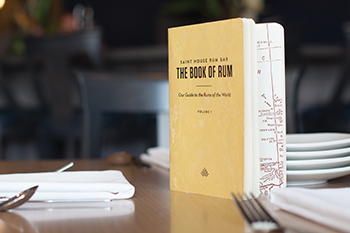 Rum is constantly pegged as sweet and syrupy – not surprising with its foundation in sugarcane – but as Saint House proves, there are styles and flavors from all over the world to be explored. On every table sits a little yellow chapbook titled The Book of Rum, and in it 17 countries are represented: from Brazil to Java with many islands in between.
Rum is constantly pegged as sweet and syrupy – not surprising with its foundation in sugarcane – but as Saint House proves, there are styles and flavors from all over the world to be explored. On every table sits a little yellow chapbook titled The Book of Rum, and in it 17 countries are represented: from Brazil to Java with many islands in between.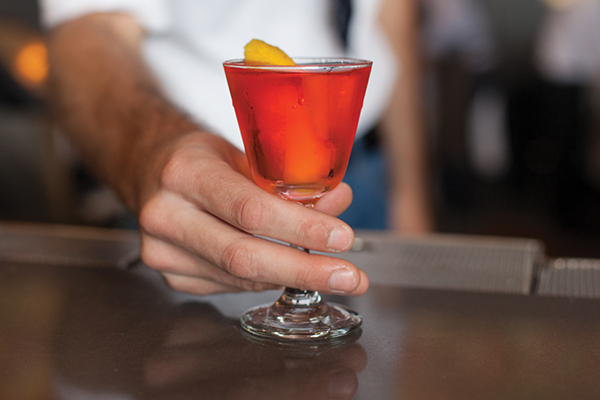
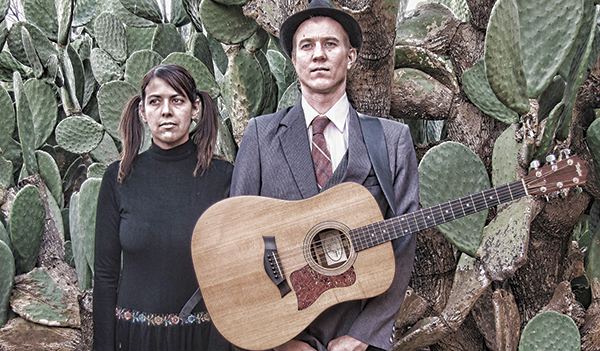
 For the younger set, summer brings free entertainment in the form of Loft Kids Fest (the event formerly known as the Tucson International Children’s Film Festival). Kickoff festivities at Trail Dust Town on Friday, July 19 at 5:30 pm include trick roping by lariat artist Loop Rawlins, followed by a screening of his short The Adventures of Loop & Rhett. Trail Dust Town’s homage to the Old West can be found at 6541 E. Tanque Verde Rd.
For the younger set, summer brings free entertainment in the form of Loft Kids Fest (the event formerly known as the Tucson International Children’s Film Festival). Kickoff festivities at Trail Dust Town on Friday, July 19 at 5:30 pm include trick roping by lariat artist Loop Rawlins, followed by a screening of his short The Adventures of Loop & Rhett. Trail Dust Town’s homage to the Old West can be found at 6541 E. Tanque Verde Rd. Indulging oneself for a good cause is always a win-win; thus the 2013 Salsa & Tequila Challenge. A $40/person ticket price benefits the Southern Arizona Arts and Cultural Alliance as well as the Community Food Bank of Southern Arizona. The question is, are you up for it? There’ll be as many as fifty tequila-based mixed drink and menu pairings presented by area chefs with bragging rights at stake, plus creative salsa concoctions galore, so you may want to begin training. The competition takes place at La Encantada shopping center, 2905 E. Skyline Dr., on Saturday, August 24 at 5:30 pm with winning tequilas and salsa announced the same evening. Purchase tickets online at
Indulging oneself for a good cause is always a win-win; thus the 2013 Salsa & Tequila Challenge. A $40/person ticket price benefits the Southern Arizona Arts and Cultural Alliance as well as the Community Food Bank of Southern Arizona. The question is, are you up for it? There’ll be as many as fifty tequila-based mixed drink and menu pairings presented by area chefs with bragging rights at stake, plus creative salsa concoctions galore, so you may want to begin training. The competition takes place at La Encantada shopping center, 2905 E. Skyline Dr., on Saturday, August 24 at 5:30 pm with winning tequilas and salsa announced the same evening. Purchase tickets online at  De Anza Drive-In may be history, but Tucson’s love affair with watching movies outdoors continues. Cinema La Placita’s longest-running classic-movies-under-the-stars series screens an older Hollywood gem for $3 admission each Thursday evening at 7:30 pm through August. That price includes popcorn, and the courtyard setting at 110 S. Church Ave. is ideal for canoodling. Cinema La Placita will also show a film at 7:30 pm on Saturday, July 13 as part of the month’s Second Saturdays Downtown celebration. Visit
De Anza Drive-In may be history, but Tucson’s love affair with watching movies outdoors continues. Cinema La Placita’s longest-running classic-movies-under-the-stars series screens an older Hollywood gem for $3 admission each Thursday evening at 7:30 pm through August. That price includes popcorn, and the courtyard setting at 110 S. Church Ave. is ideal for canoodling. Cinema La Placita will also show a film at 7:30 pm on Saturday, July 13 as part of the month’s Second Saturdays Downtown celebration. Visit 


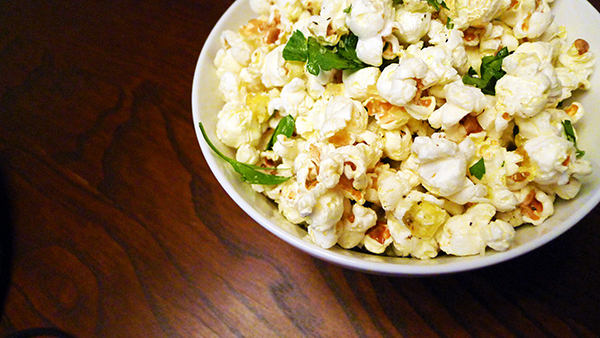
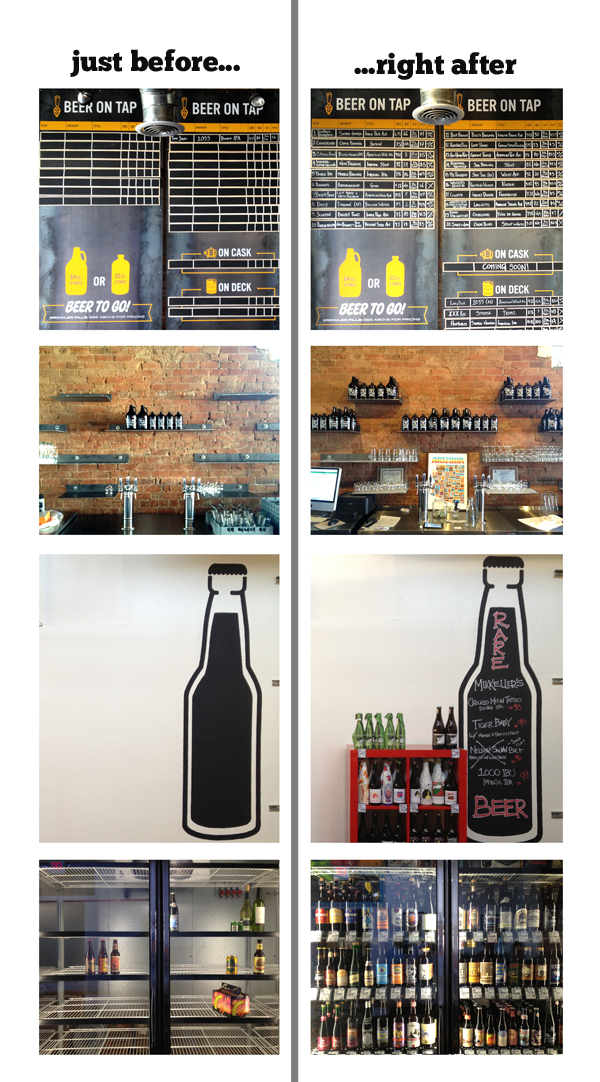




Also find us on...